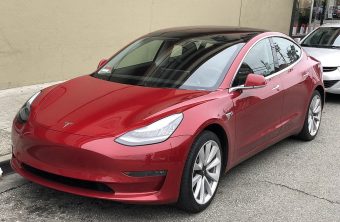
Tesla just barely missed its goal of producing 5,000 Model 3 electric cars a week, according to Reuters, which says that the company reached the mark “several hours after the midnight goal,” while Tesla CEO Elon Musk said on Twitter that the company manufactured 7,000 vehicles in a week.
Reuters spoke with two factory workers who say that the final vehicle completed its “final quality checks” around 5AM PT Sunday morning, just shy of the midnight deadline that Musk set in early June. According to Electrek, a Tesla employee posted a celebratory picture on Twitter after the final car was completed. Tesla is expected to officially release its numbers for its second quarter in the coming week.
“Not only did we factory gate over 5000 Model 3’s, but we also achieved the S & X production target for a combined 7000 vehicle week!,” said Musk, in an email to all employees obtained by Bloomberg. “What’s more, with the widespread productivity gains throughout Tesla and the new production lines spooling up, we are on track to reach 6K/week for Model 3 next month,” the email continues. “I think we just became a real car company.”
Tesla has a lot riding on its Model 3. The electric car company hopes the cheaper vehicle be widely adopted by consumers, and thus help bring the company to profitability and realizing Musk’s dream of wide-spread adoption of electric vehicles. It hasn’t been a smooth road for the company, however: it missed its intended goal of 5,000 vehicles per week at the end of 2017, and its first quarter goal of 2,500 vehicles a week, even after ramping up production earlier this year. Part of the problem was Tesla’s over-reliance on automation in its Fremont, California factory, which caused production bottlenecks and delays.
However, while Tesla didn’t quite reach its second quarter goal, it came closer than it has before — in April, it was only producing 2,000 of the 2,500 cars it had hoped to produce. This is due in part to huge production ramp-up that included the construction of a third assembly line outside of the plant, and continual tinkering with the vehicle’s design to optimize the vehicle’s construction.
The question now is whether or not the company can sustain and grow this pace to meet demand for its cars.
Source: The Verge



